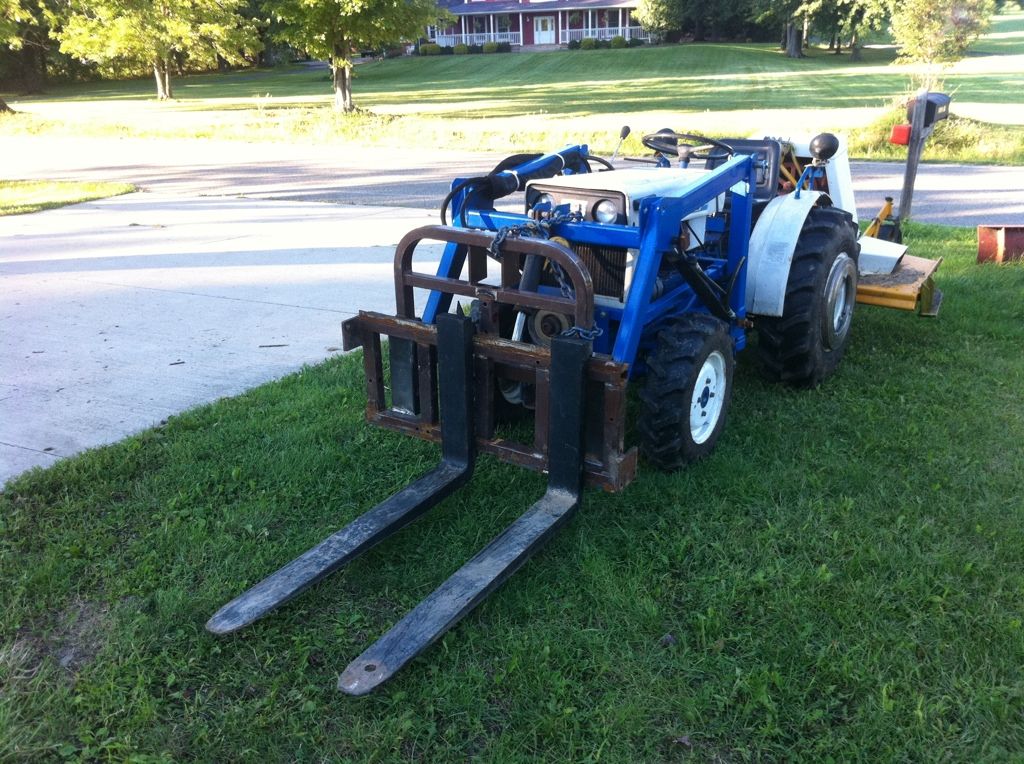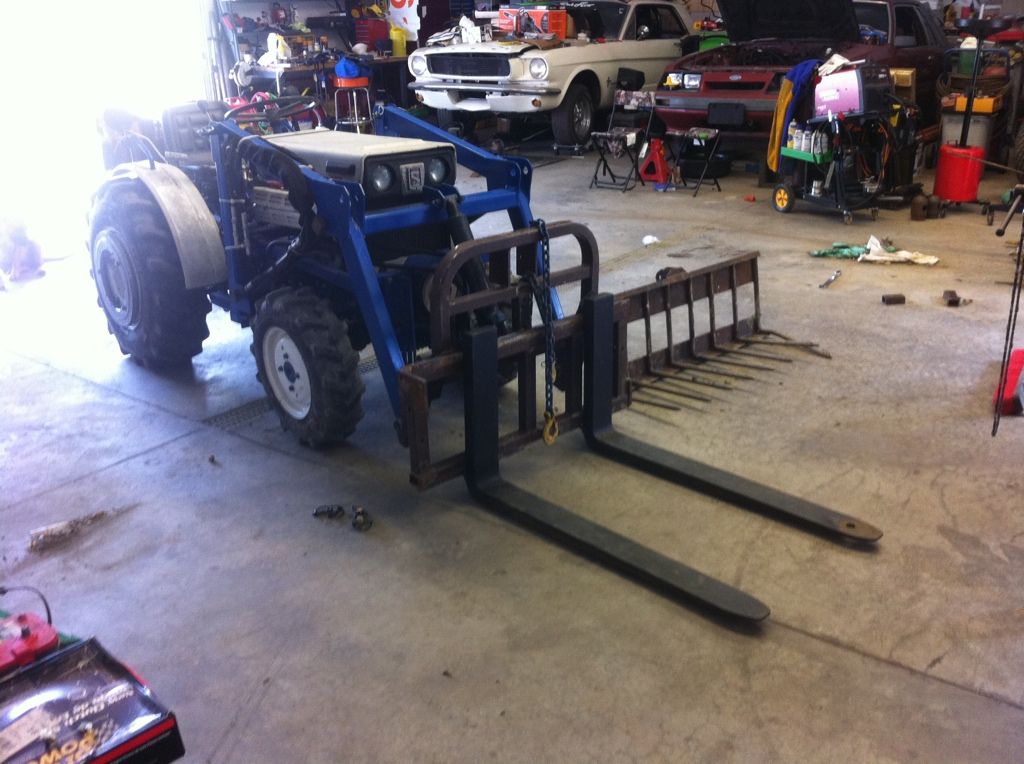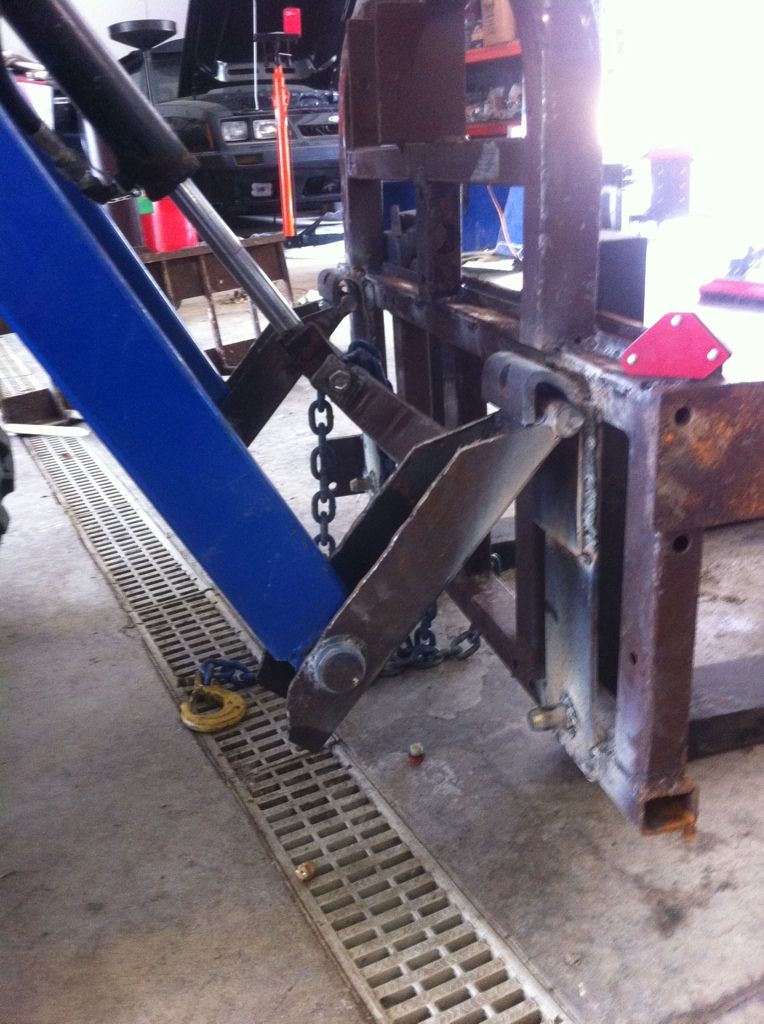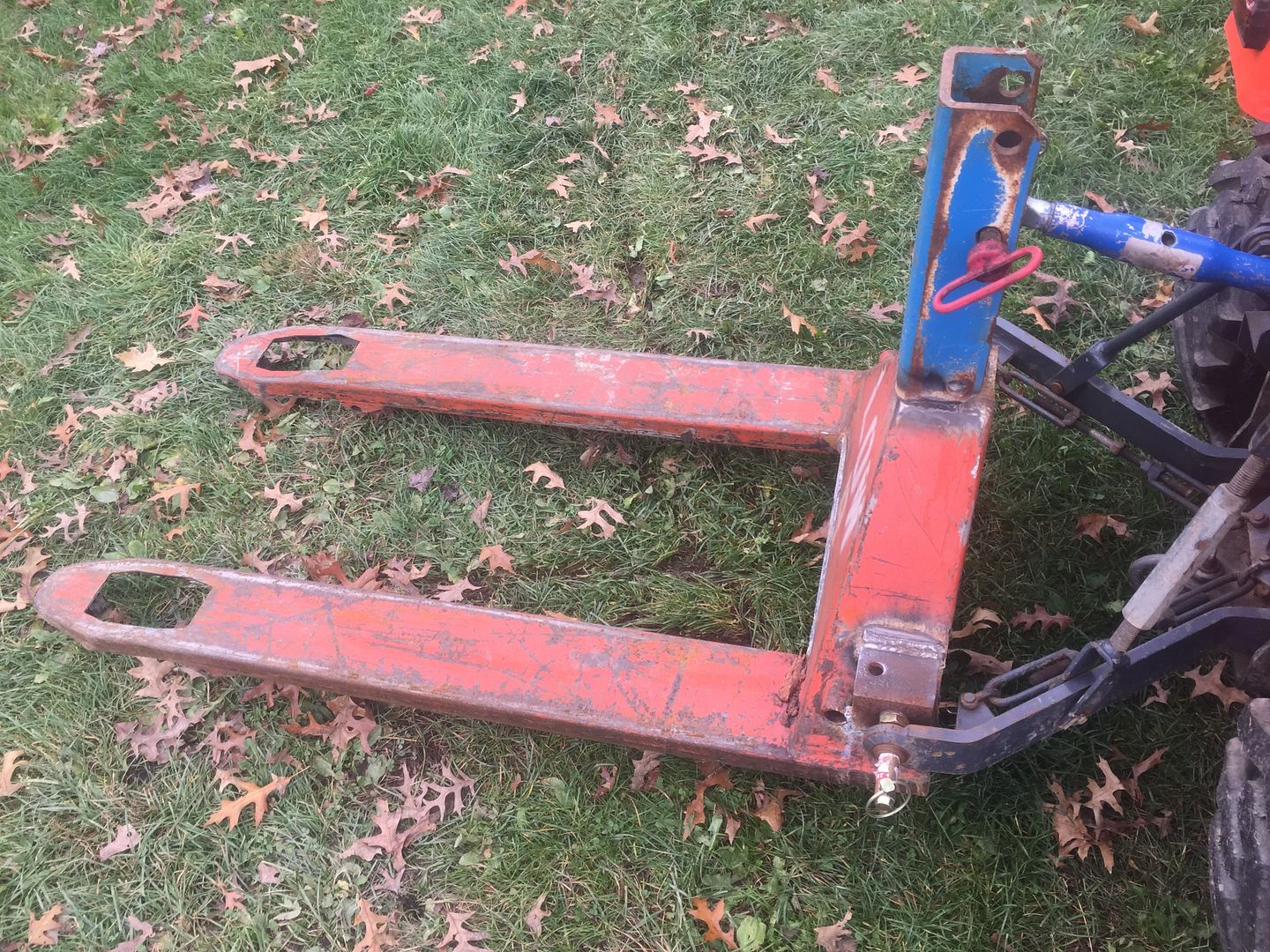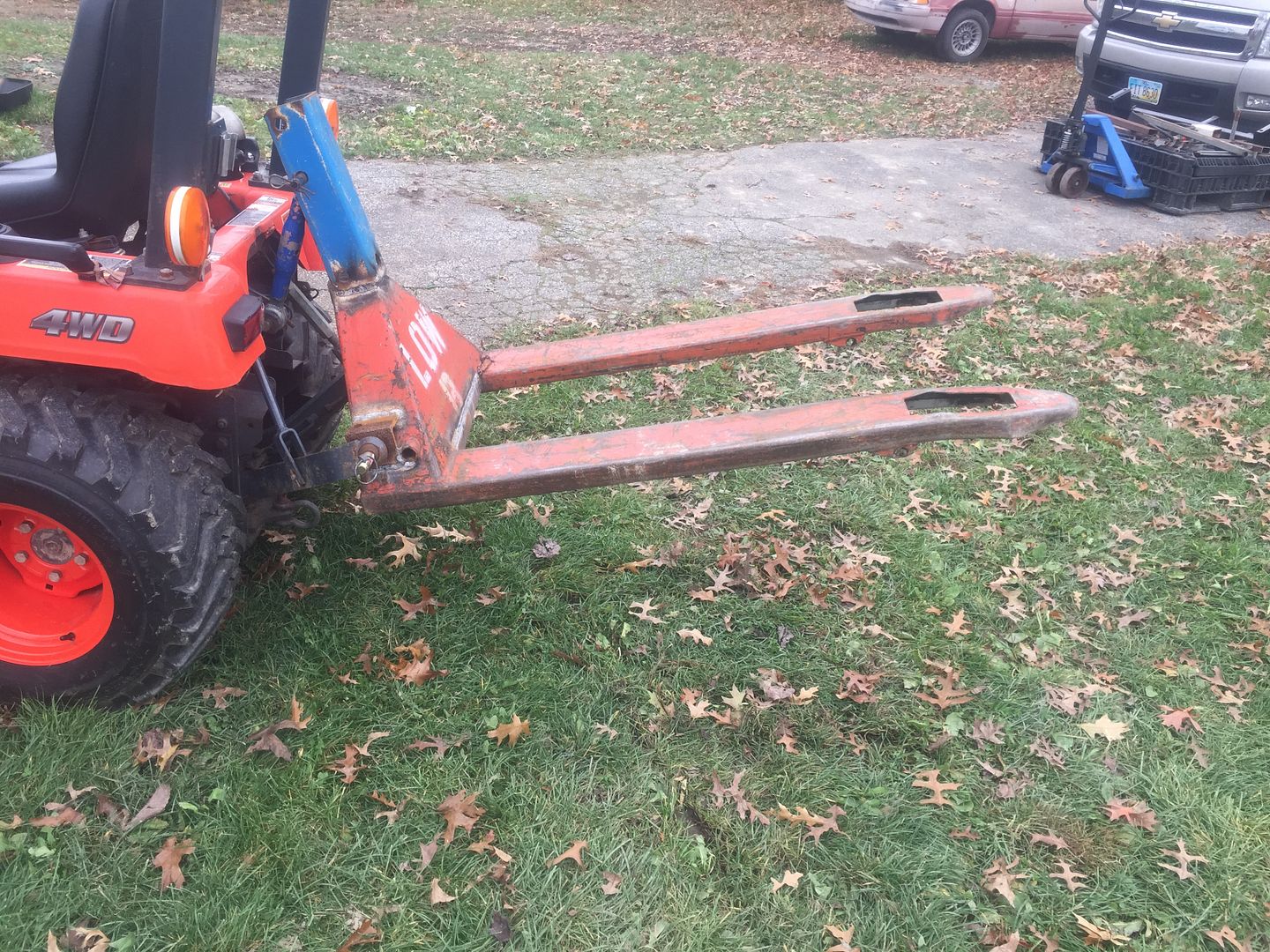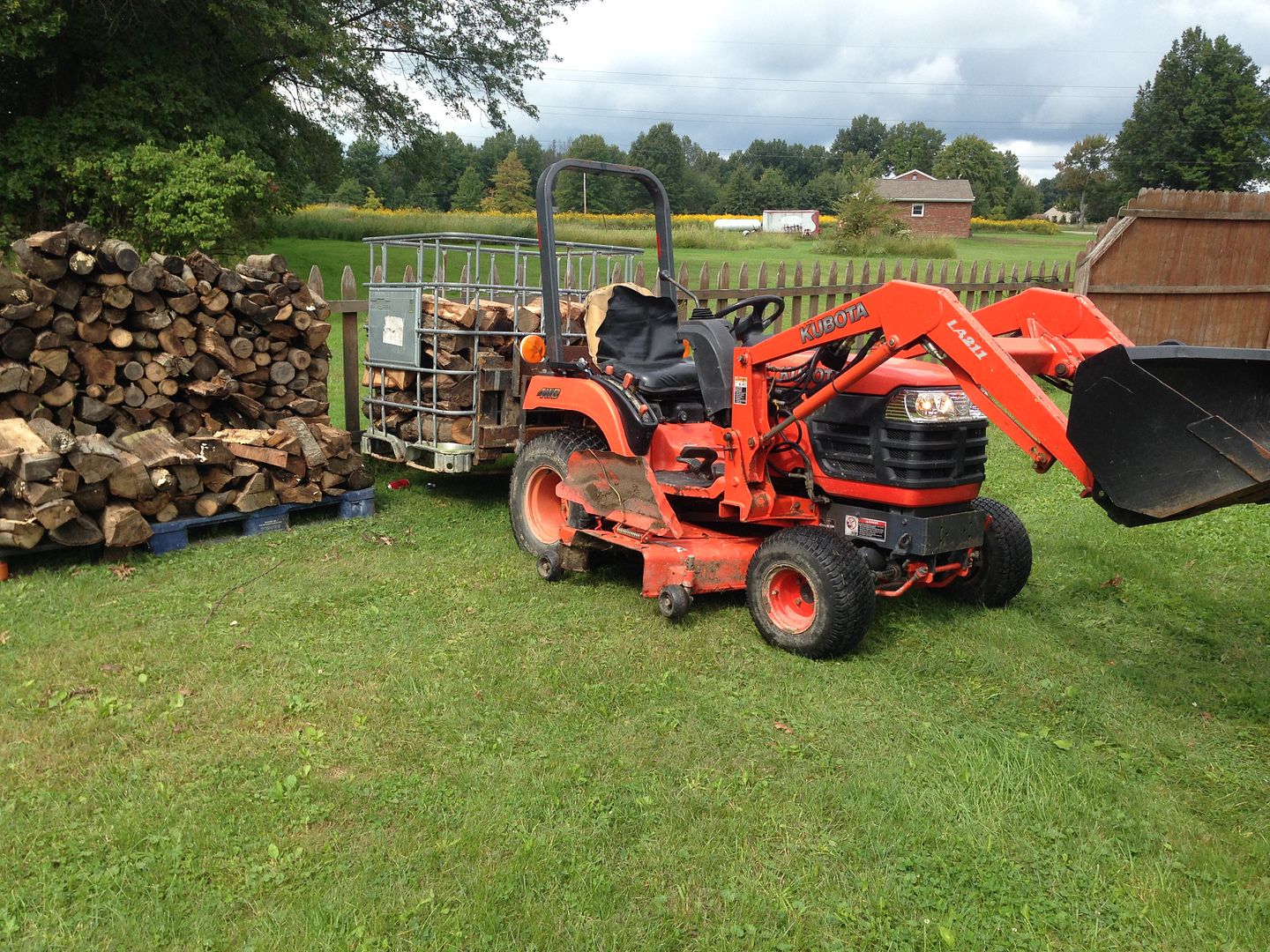Freakingstang
Gold Member
Awesome work man! was that a grizzly mill I spotted in the pics?
I love welding... I love building projects, I built a whole front end loader, fork attachment, quick attach for the fel...
Anyways, I sold that little power house and now have a little kubota BX2230. My fork attachment with forklift 6K lb forks is just too heavy for the Bx's little lift capacity. I made a temporary pallet mover from a old broken pallet jack just to get me out of a bind, but the lack of adjustiblity really sucks,
So not being able to find little forged forks, what are your thoughts on 3"x2" 3/16" wall for my little machine that is rated for 5-600lbs of lift.
What pivot bar did you use for the forks? solid bar or tubing?
I love welding... I love building projects, I built a whole front end loader, fork attachment, quick attach for the fel...
Anyways, I sold that little power house and now have a little kubota BX2230. My fork attachment with forklift 6K lb forks is just too heavy for the Bx's little lift capacity. I made a temporary pallet mover from a old broken pallet jack just to get me out of a bind, but the lack of adjustiblity really sucks,
So not being able to find little forged forks, what are your thoughts on 3"x2" 3/16" wall for my little machine that is rated for 5-600lbs of lift.
What pivot bar did you use for the forks? solid bar or tubing?
